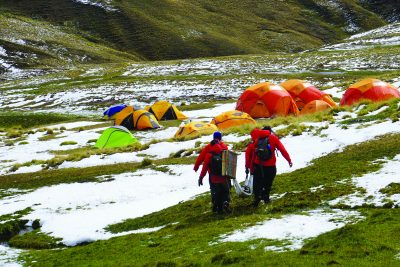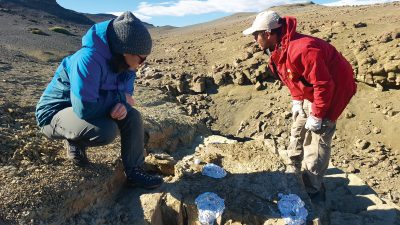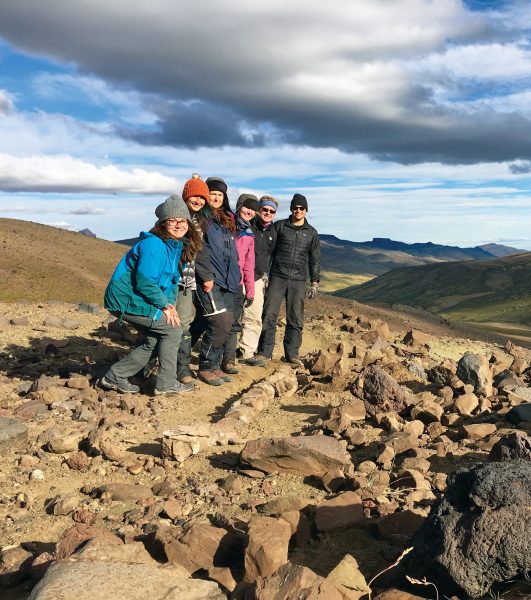Searching for Fossils in Patagonia
December 4, 2019


North of the town of Puerto Natales, Chile, near Torres del Paine National Park, an international group of scientists from across South America, Germany, Japan and, most recently, Texas has been working to uncover fossils in Patagonia. The field work is part of a multidisciplinary project of geologists and paleontologists studying biotic connections between South America and Antarctica.
Julia Clarke, Wilson Professor of Paleontology at The University of Texas at Austin, and Ph.D. student Sarah Davis have been working with scientists at the Instituto Antártico Chileno (INACH) and the University of Chile for the last three years. The team, co-led by Director of INACH Dr. Marcelo Leppe, is looking for fossils and studying the geology of the Las Chinas field site. The site records the time interval just before, during and after the Earth experienced the last of its “Big Five” mass extinctions, which resulted in the demise of non-bird dinosaurs. Recently, Clarke and Davis collaborated with Jackson School Professor Brian Horton and Ph.D. student Sarah George to demonstrate the presence of this key time interval in a paper published in the Journal of South American Earth Sciences. Clarke and Davis study the evolution of birds, the only group of dinosaurs that survived this catastrophic event; their work with the field site focuses on finding bird and other small theropod dinosaur fossils to better understand their diversity and evolution before and after the extinction event.

In February 2019, during the Chilean summer, the team returned to the field to continue the search for signs of ancient life. After a seven-mile hike through grassy foothills, the researchers set up camp near fossil bearing outcrops, where they stayed and worked for two weeks. The site presented several challenges: steep climbs up to outcrops, populations of pumas that roam the area and the ever-changing Patagonian weather. This year the team faced a new obstacle after the entire valley was covered in a foot of snow during the middle of the field season, covering the fossiliferous rocks. Despite this, the group had a successful season, recovering the remains of several dinosaur groups including birds, as well as reptiles, amphibians and mammals. These fossils were excavated and brought to the University of Chile and INACH.
Clarke, Davis and the team plan to return to the field in February 2020. Work at the site has included several members of the Clarke lab,including graduate students Chris Torres and Grace Musser and undergraduates Hector Garza and Sarah Hood. This field work is made possible by funding from the Jackson School and the National Science Foundation.
Sarah Davis
Doctoral Candidate
